Lecture 2: cranium pt.1
1/100
There's no tags or description
Looks like no tags are added yet.
Name | Mastery | Learn | Test | Matching | Spaced |
|---|
No study sessions yet.
101 Terms
2 parts of the cranium
Neurocranium and splanchnocranium
Neurocranium
Bones and tissues surrounding the brain
Splanchnocranium
Facial bones
6 Neurocranium bones
Frontal, parietal, occipital, temporal, sphenoid, ethmoid
2 divisions of Neurocranium bones
Calvaria (roof of skull), basicradium (floor of skull)
3 bones of calvaria
Frontal, parietal, occipital
3 bones of basicranium
Temporal, sphenoid, part of ethmoid
7 articulations of frontal bone
Nasals, maxillae, lacrimals, ethmoid, sphenoid, zygomatics, parietals
2 parts of frontal bone
Frontal squamous and horizontal portion
Difference between supraorbital notch and supraorbital foramen
Notch is not close (U-shaped), foramen is closed
Supraorbital margin
Brow ridge
Frontal bosses
Puffy/rounded area in middle of forehead
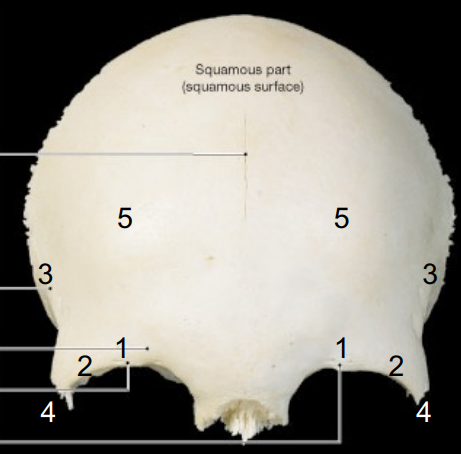
What is 1
Supraorbital notch/foramen
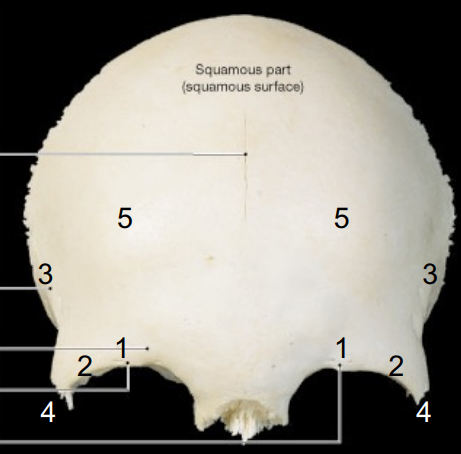
What is 2
Supraorbital margin
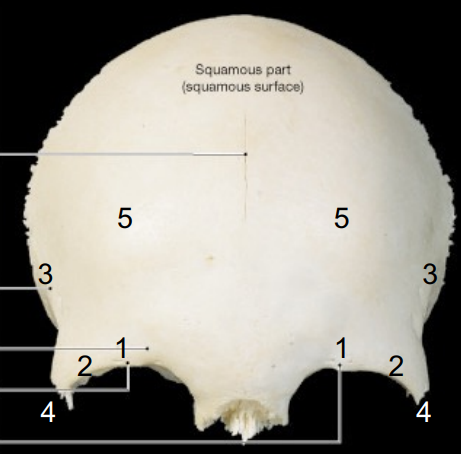
What is 3
Temporal line
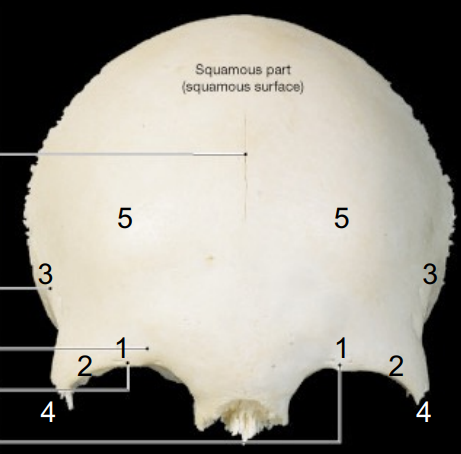
What is 4
Zygomatic process
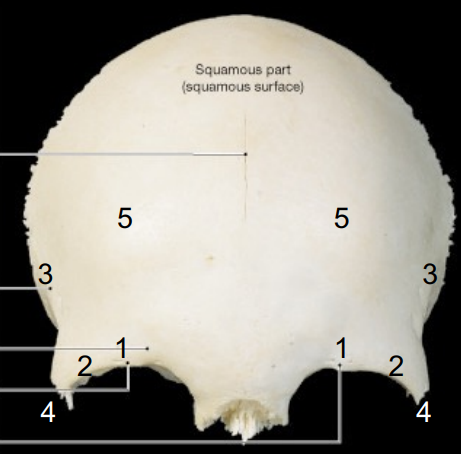
What is 5
Frontal bosses
Sagittal sulcus
Small depression
Arachnoid fovea
Cluster of holes
Meningeal grooves
Look like veins
Foramen caecum
most anterior aspect of crest
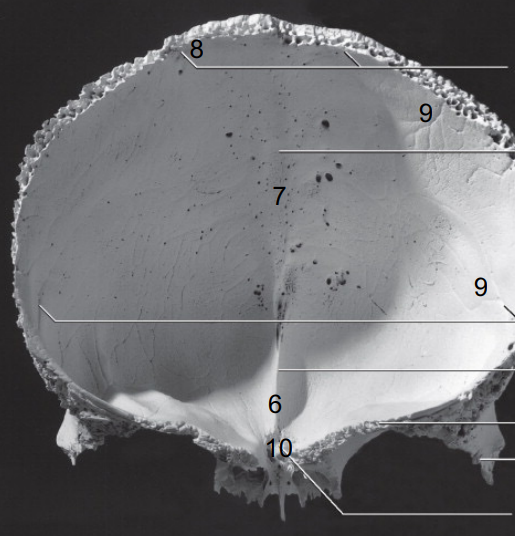
What is 6
Frontal crest
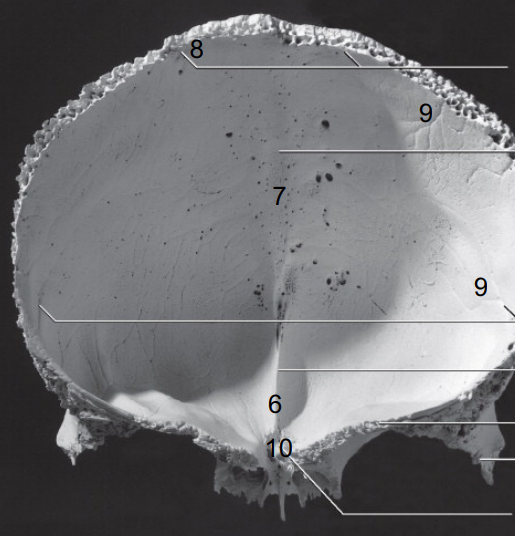
What is 7
Sagittal sulcus
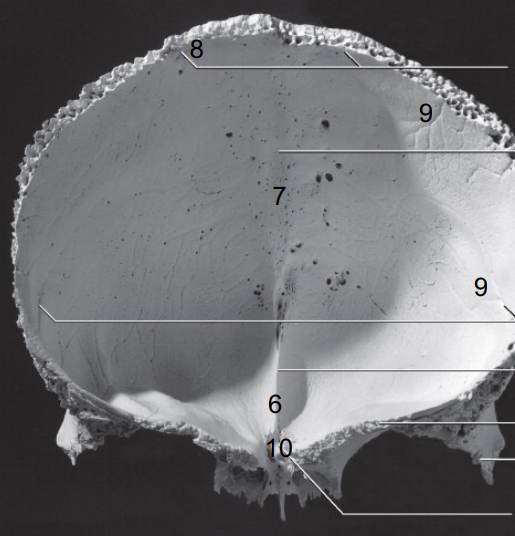
What is 8
Arachnoid fovea
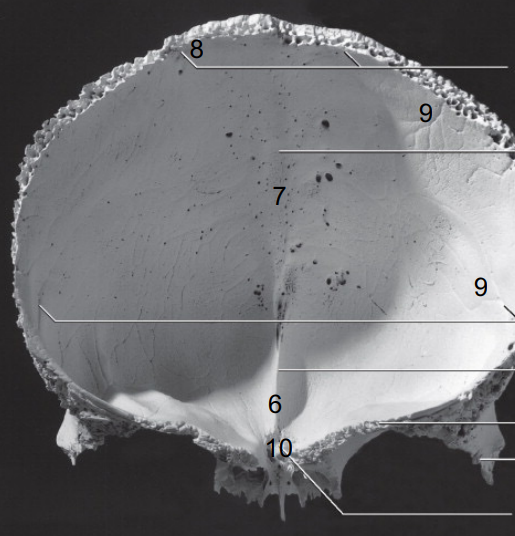
What is 9
Meningeal grooves
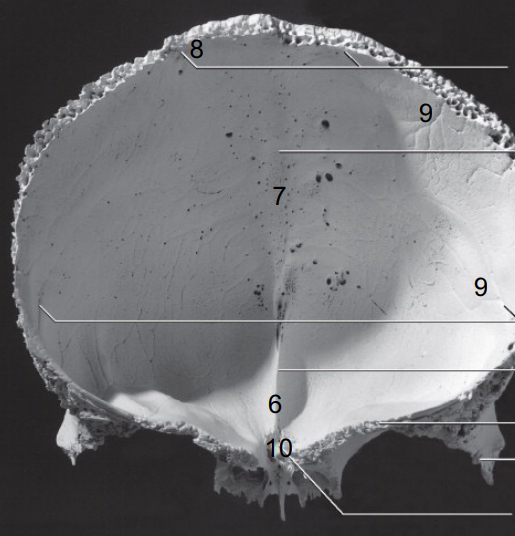
What is 10
Foramen caecum
4 differences between frontal and parietal bone
Parietal have more pronounced meningeal grooves, smoother surface, less curved, thinner
5 articulations of parietal bones
Occipital, frontal, sphenoid, temporal, and other parietal
4 sides of parietal bone
Medial, frontal, inferior, posterior
Which side is frontal in parietal bone and what bone does it connect with
Straight side, connects with frontal bone
Which side is medial in parietal bone and what bone does it connect with
Long c-shaped side, connects with other parietal
Which side is posterior in parietal bone and what bone does it connect with
Short side with notch at bottom, connects with occipital
Which side is inferior in parietal bone and what bone does it connect with
Sharp c-shaped, connects with temporal
Is parietal foramen always beside sagittal suture
No, can sometimes be on it
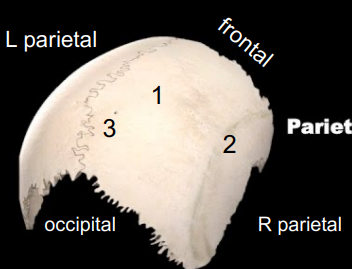
What is 1
Parietal bosses
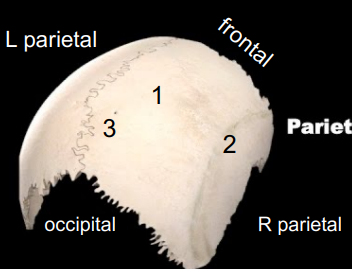
What is 2
Temporal line
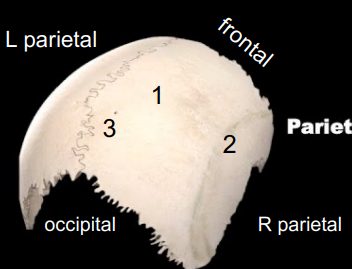
What is 3
Parietal foramen
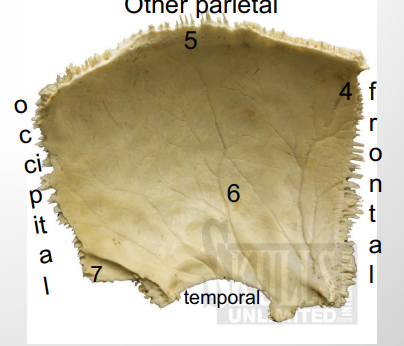
What is 4
Arachnoid fovea
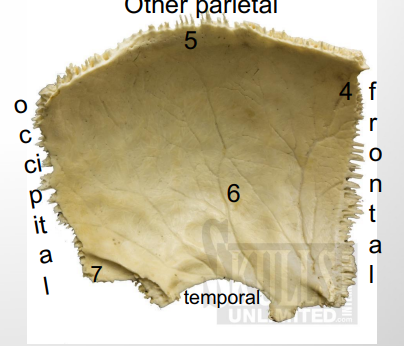
What is 5
Sagittal sulcus
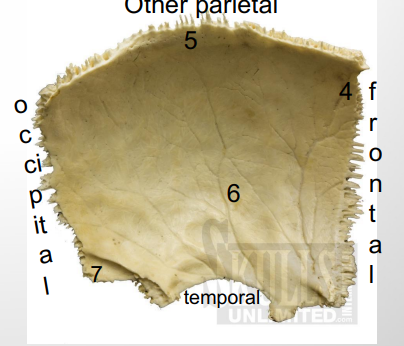
What is 6
Meningeal grooves
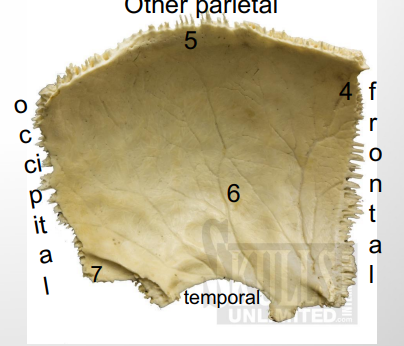
What is 7
Sigmoid sulcus
3 ways to tell apart parietal bone from temporal, occipital, and frontal bones
Parietal is more uniformly thick, had temporal line across entire ectocranial length, endocranial surface is smoother
4 occipital articulations
Parietal, temporal, sphenoid, atlas C1
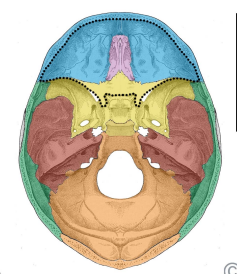
What is orange
Occipital bone
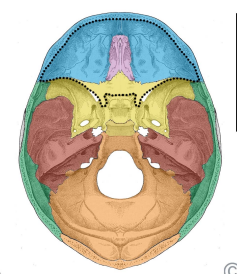
What is yellow
Sphenoid
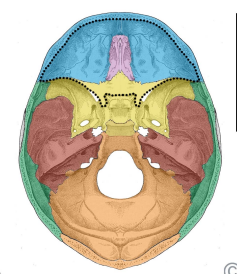
What is red
Temporal
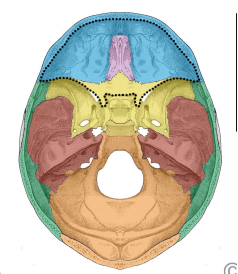
What is green
Parietal
3 parts of occipital bone
Squamous, basilar, lateral
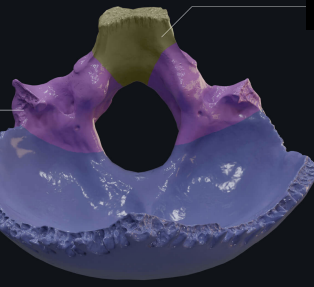
What is yellow
Basilar
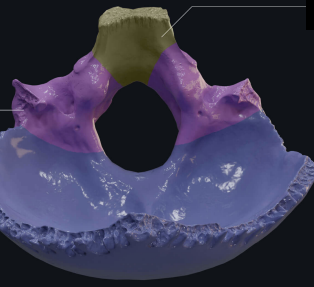
What is purple
Lateral
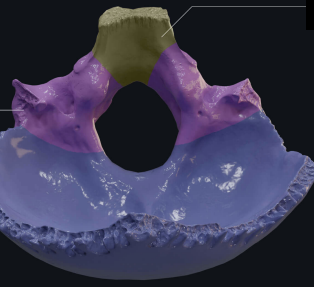
What is blue
Squamous
Hypoglossal canal
Goes under occipital condyles
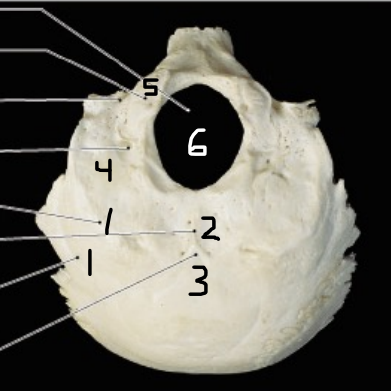
What is 1
Nuchal lines
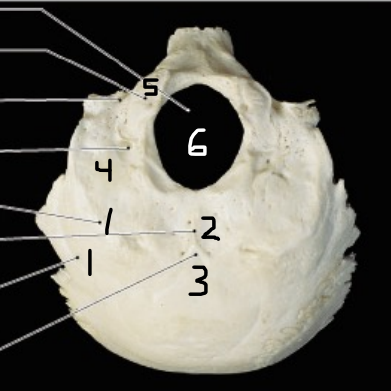
What is 2
External occipital crest
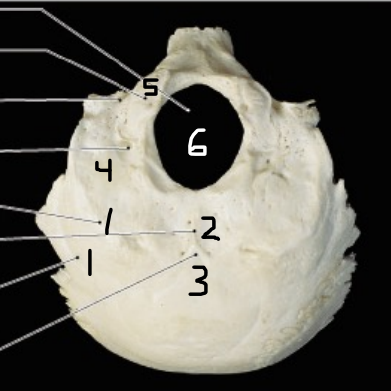
What is 3
External occipital protuberance
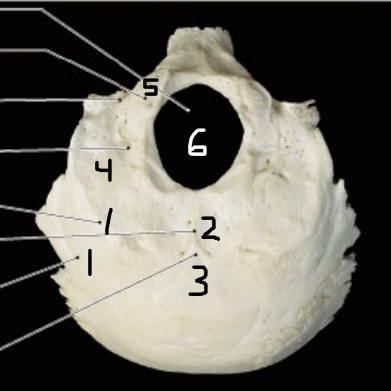
What is 4
Condylar fossa
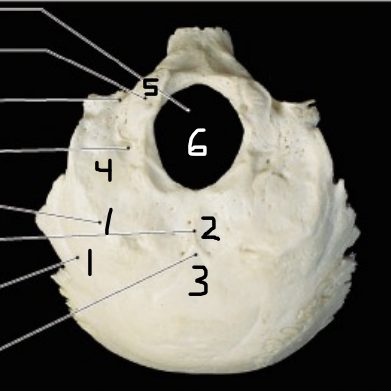
What is 5
Occipital condyles
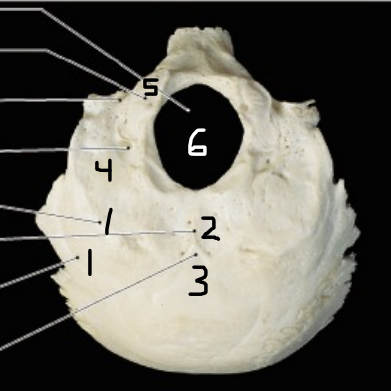
What is 6
Foramen magnum
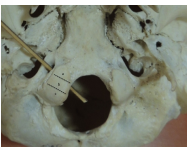
Hypoglossal canals
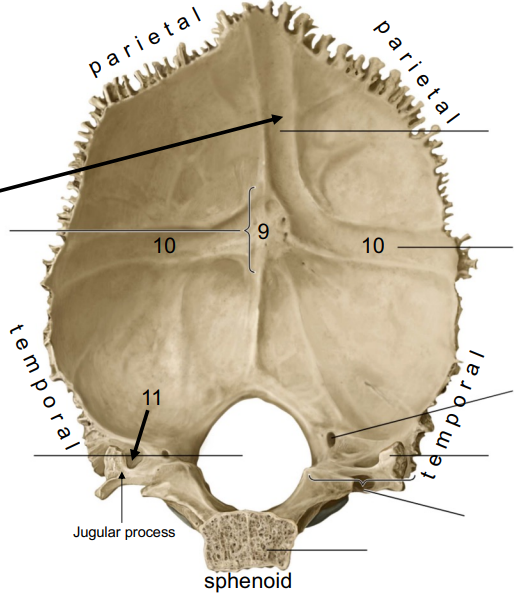
What is 8
Occipital (sagittal) sulcus
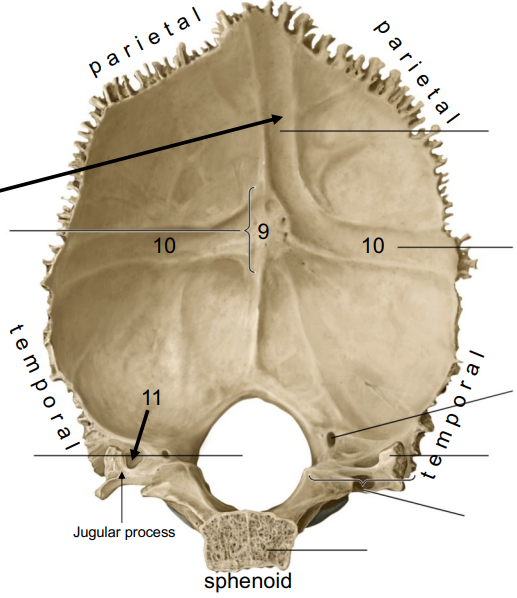
What is 9
Internal occipital protuberance
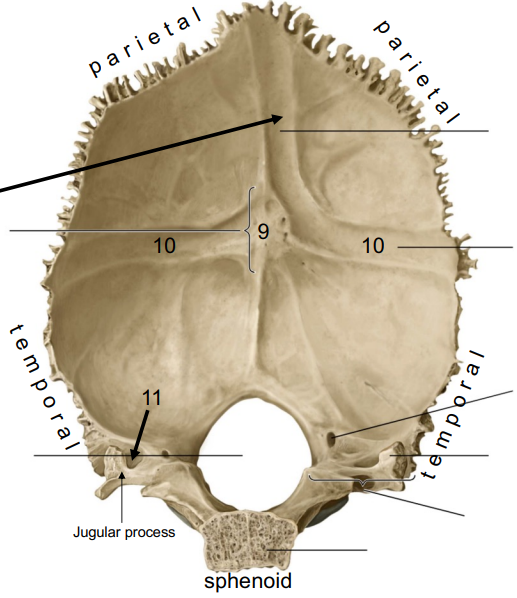
What is 10
Transverse sulci
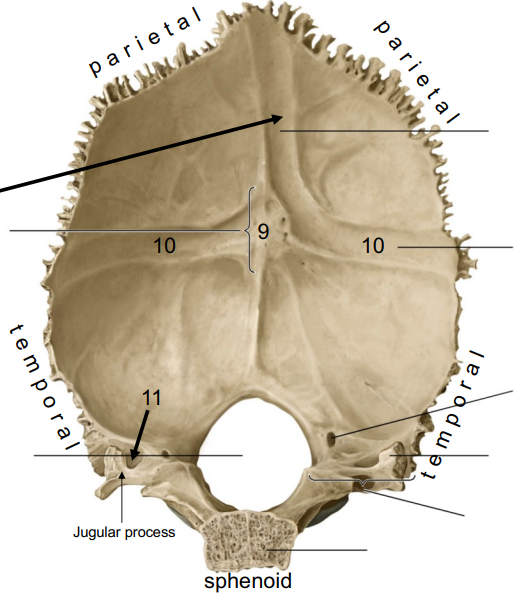
What is 11
Jugular notch
What does the jugular notch form
Jugular foramen with temporal
4 ways to tell apart occipital bone from other bones
Wide variation in thickness across squama, no endocranial meningeal grooves, more rugose, no feathering
5 temporal articulations
Parietal, occipital, sphenoid, zygomatic, and mandible
3 temporal parts
Squama, tympanic, petrous pyramid
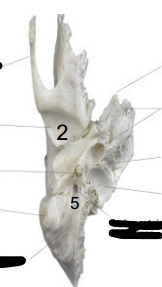
What is 2
Mandibular/glenoid fossa
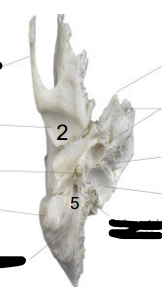
What is 5
Stylomastoid foramen
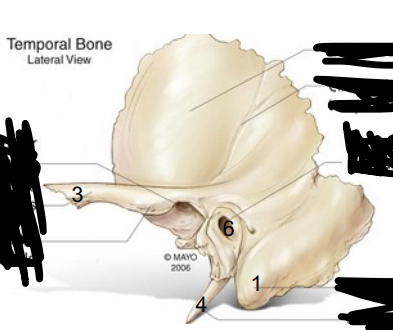
What is 1
Mastoid process
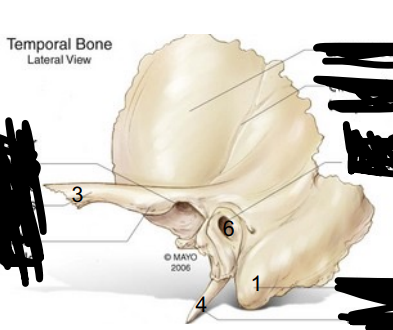
What is 3
Zygomatic process
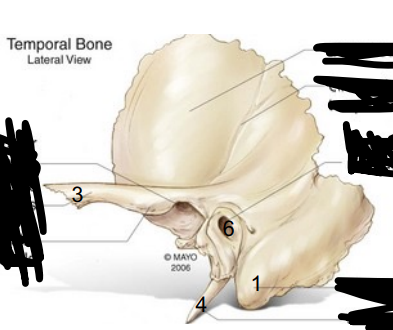
What is 4
Styloid process
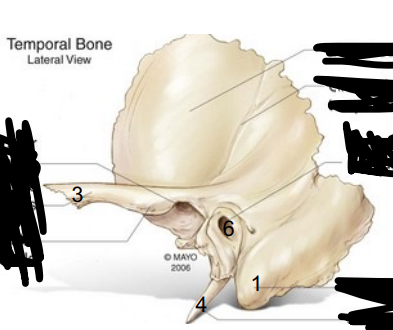
What is 6
External auditory meatus
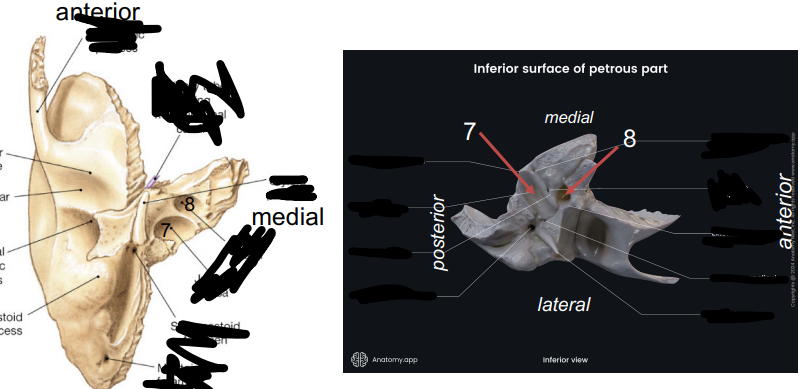
What is 7
Jugular fossa
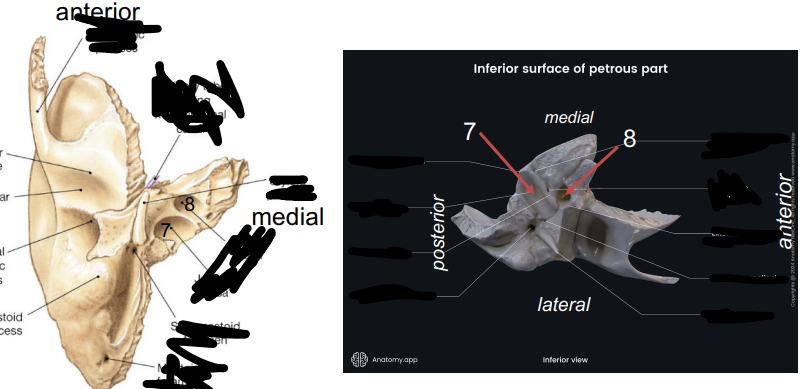
What is 8
Carotid canal
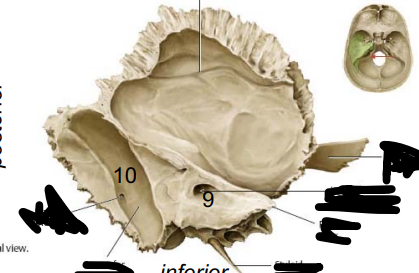
What is 9
Internal acoustic meatus
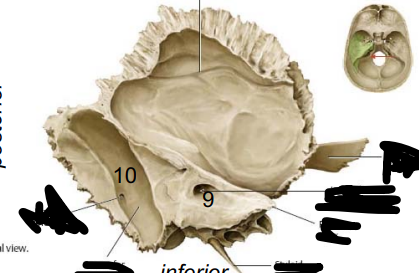
What is 10
Sigmoid sulcus
2 ways to tell apart temporal bone from other bones
Thinner, zygomatic bone is not as thin or long as zygomatic process of temporal bone
8 sutures
Sagittal
Frontonasal
Zygomaticomaxillary
Metopic (usually absent)
Coronal
Lambdoidal
Squamosal
Spheno-occipital
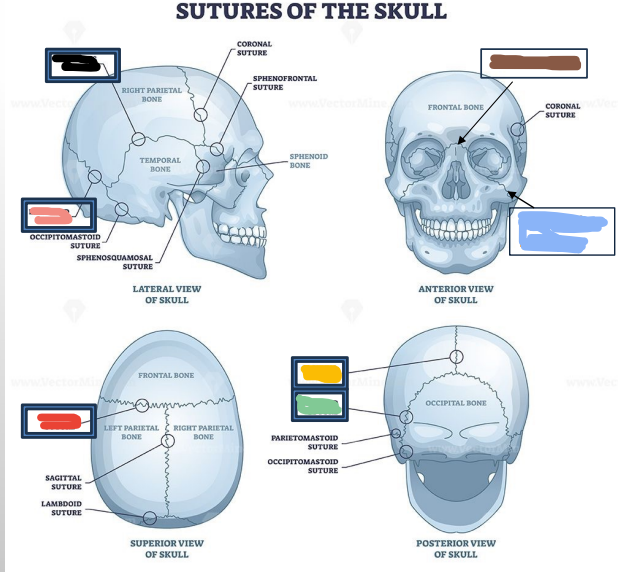
What is pink
Lamboid
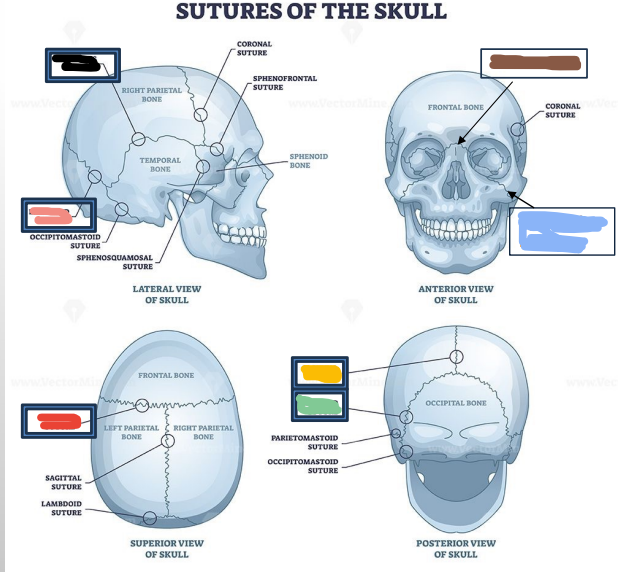
What is black
Squamous
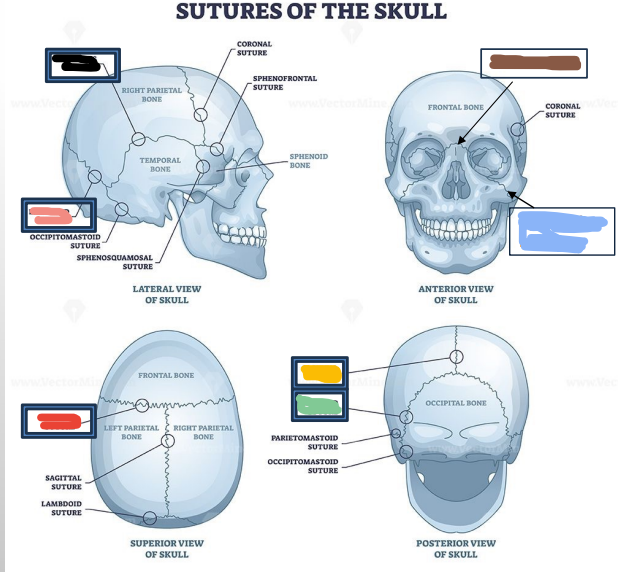
What is red
Coronal
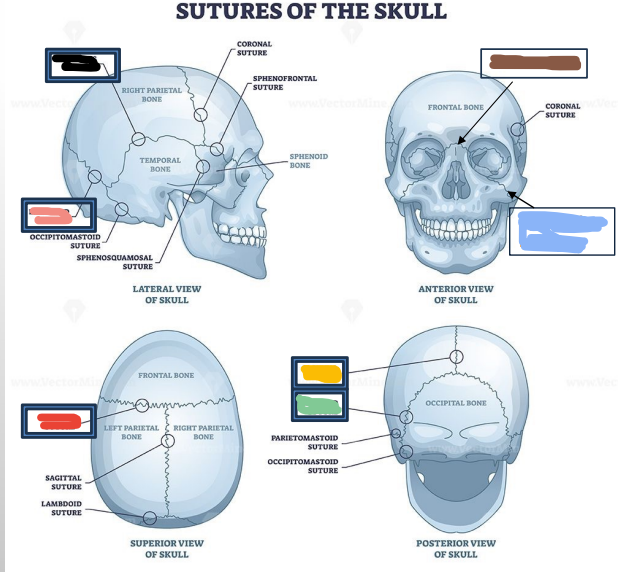
What is yellow
Sagittal
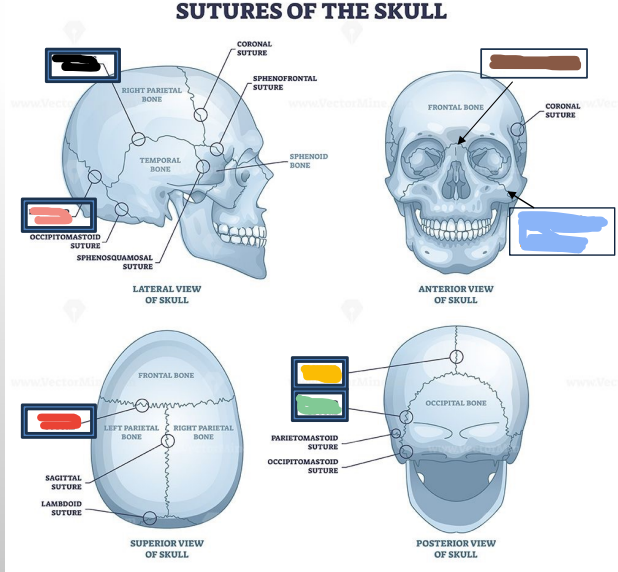
What is green
Lamboid
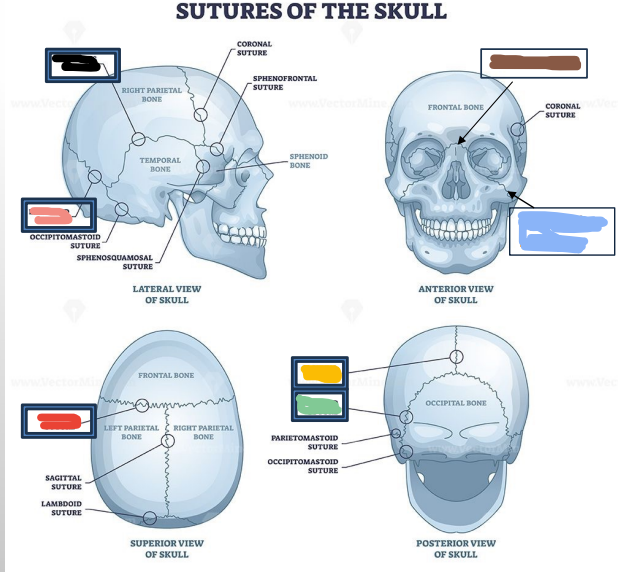
What is brown
Frontonasal
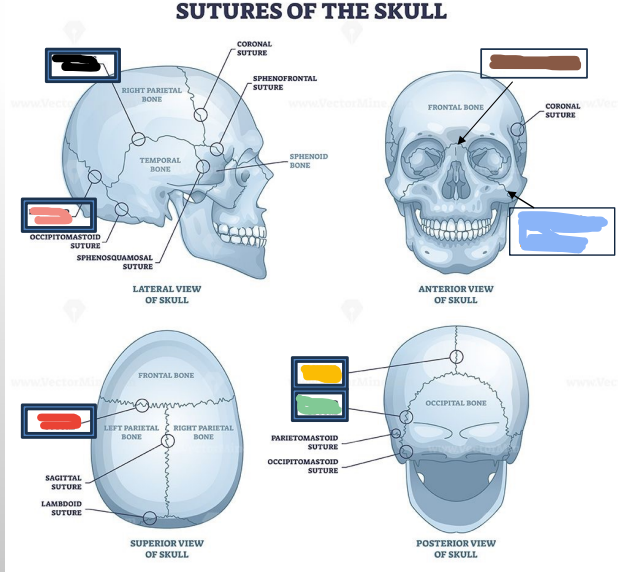
What is blue
Zygomaticomaxillary
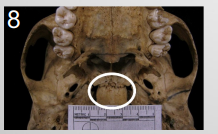
What is 8
Spheno-occipital
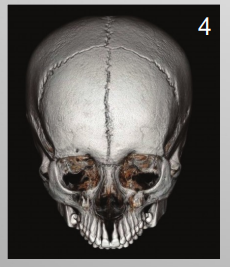
What is 4
Metopic
3 parts of hyoid bone
Body, greater horns, lesser horns
1 articulation of mandible
Temporal @ glenoid process
2 parts of mandible
Body/horizontal ramus and ascending ramus
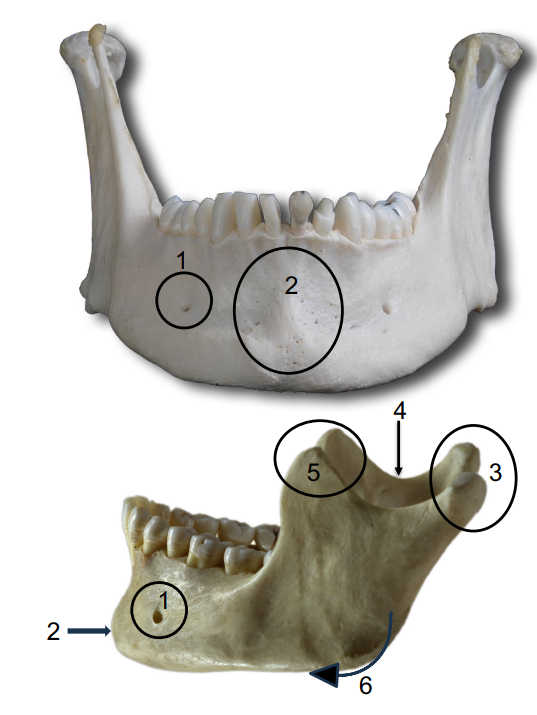
What is 1
Mental foramen
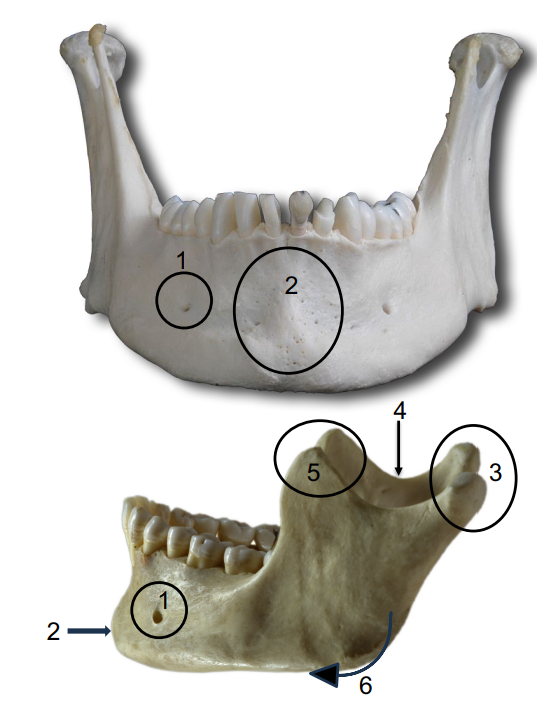
What is 2
Mental eminence/protuberance
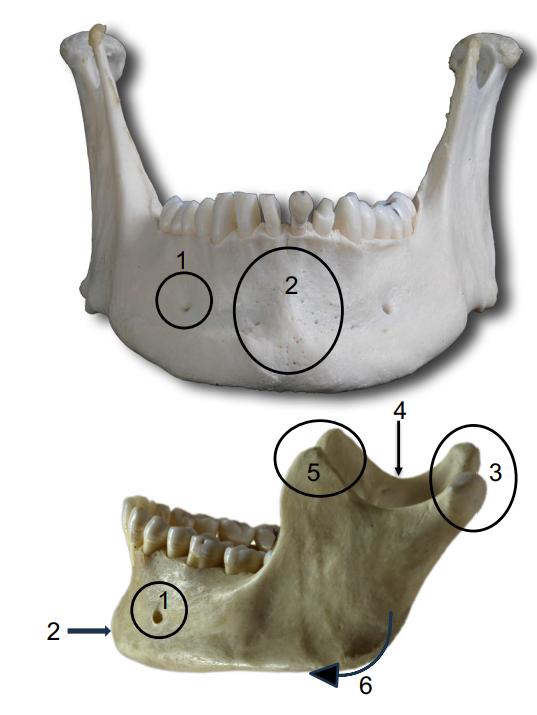
What is 3
Mandibular condyle
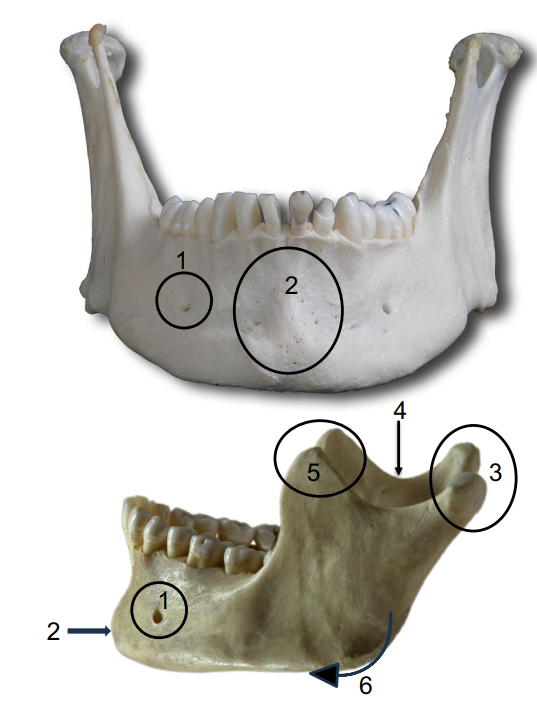
What is 4
Mandibular notch
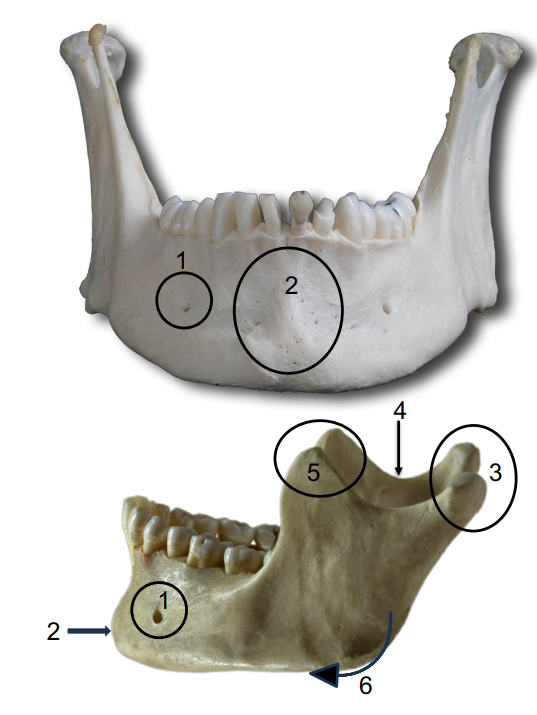
What is 5
Coronoid process
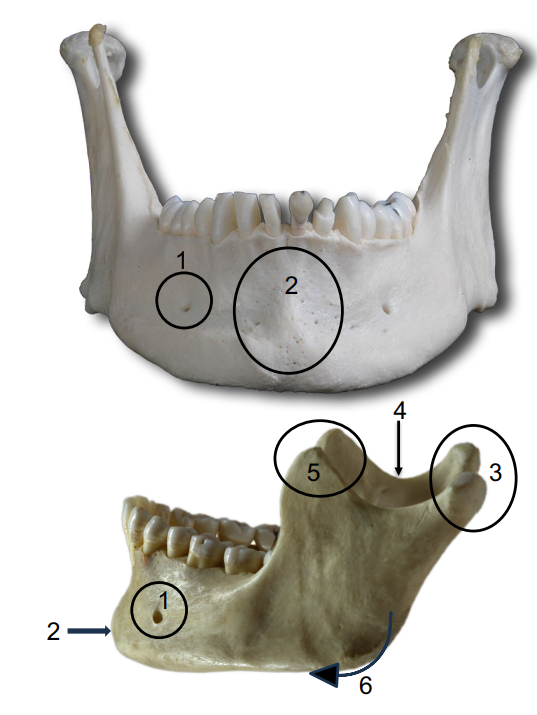
What is 6
Gonial angle
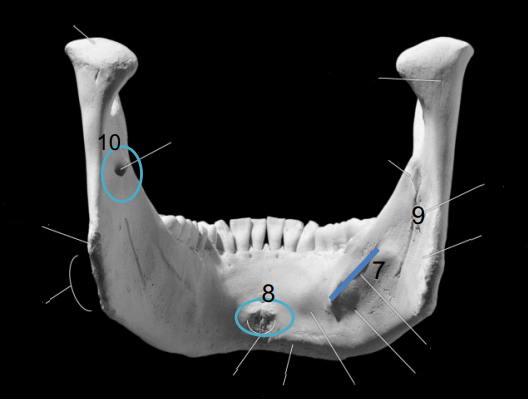
What is 7
Mylohyoid line
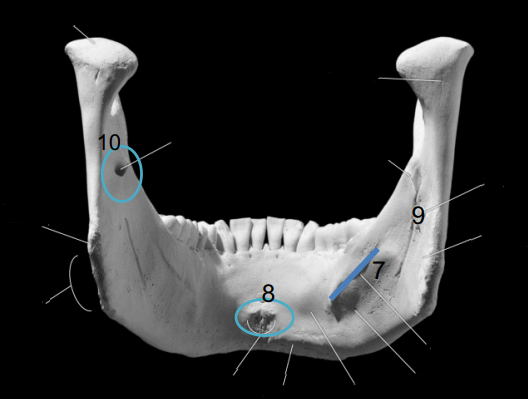
What is 8
Mental spines
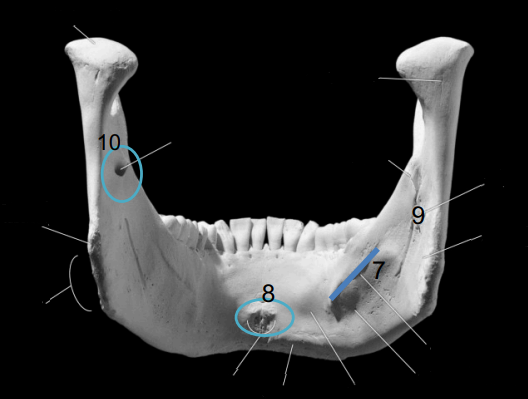
What is 9
Mylohyoid groove